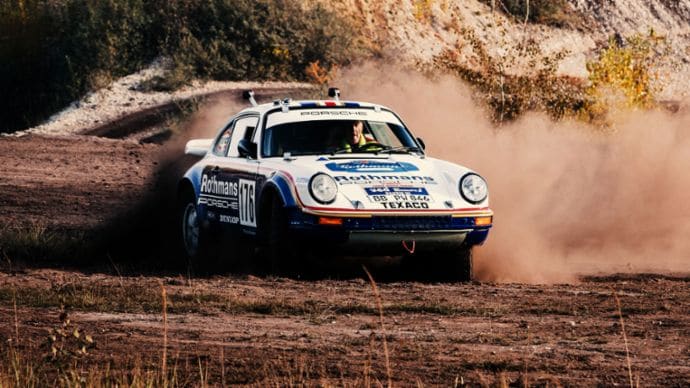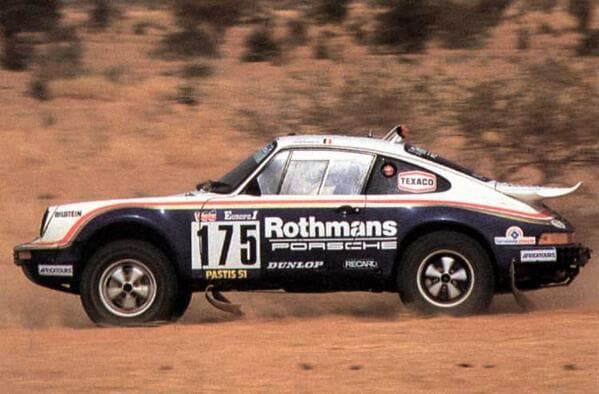
It is widely recognized that some of the greatest things in life are created accidentally. This is no foreign concept to the world of rally racing. The epitome of an accident-turned-miracle in rally racing is the eminent Paris-Dakar Rally. The Dakar is one of the most captivating races across the globe, quite literally, and the threshold at which two entirely different worlds rendezvous as a joint host to a race that has been well-renowned throughout generations. To fully understand the significance of the race and the prestige that is earned from its victory, one must also understand the historical basis of the rally. In the scope of racing, the Paris-Dakar leans more towards the newer side of the spectrum. The initial idea began approximately a year before the first race, in 1977. Thierry Sabine, a French motorcycle racer, lost his way while in the desert of Libya. He returned safely to his home in France from his impromptu adventure with a groundbreaking idea; an idea that would be the seed of what would become one of the most notable rally races in history.
When initially routing out the rally, Sabine had intended for the starting location to be in his hometown of Paris, France. The end location would be marked in Dakar, Senegal; hence, the Paris-Dakar title that the race has managed to maintain for nearly a half-of-a-century. 16 days is the typical completion time of the grueling 6,213 mile inter-continental trek, although times have varied depending on vehicle groups. Bikes, trucks, quads, UTV’s, and cars are the different classifications that are put to the test in a dash for the gratifying title achieved by winning the rally. Amongst the variety of classifications, however, is a uniquely remarkable one - the cars. And while each one of the vehicles are modified for the environment, the cars are the least-suspecting to win, as they, more so than the other autos, are out of their standard driving elements, and therefore must perform at a level of intensity that is proportionately larger than any other vehicle class in the rally.
 In the 1980’s however, when the heart of the rally racing world was beating ever-so-intensely, and automobile manufacturers were in a mad-dash to make a name for themselves, there was one car that stood out from all others - the fabled Porsche 953. This auto is just as aesthetically pleasing as it is capable of performing, both of which were stellar enough to have established a new standard in their respective domains. Because the 953 was a heavily modified variant of the coveted Porsche 911, it provided a distinctness that left spectators utterly absent of any doubt as to which auto manufacturer was racing the vehicle, despite its primarily two-toned white and blue livery, or the massive lift that seats the body of the car. Porsche powered the 2,750 pound rally machine with a 6-cylinder engine, which effortlessly delivered 300 horsepower to the 4x4 system with which the vehicle was equipped. The 953 was the first 4x4 Porsche to have ever been used in competition, and it was the one that would propel them to victory in the most crucial time for rally racing in history. Porsche won the Paris-Dakar Rally in 1984 with the 953. It was an accomplishment that secured the auto manufacturer a spot amongst the titans on the revered pedestal of greatness, which can be achieved only by attaining triumph in pursuits as exceptional as the Paris-Dakar.
In the 1980’s however, when the heart of the rally racing world was beating ever-so-intensely, and automobile manufacturers were in a mad-dash to make a name for themselves, there was one car that stood out from all others - the fabled Porsche 953. This auto is just as aesthetically pleasing as it is capable of performing, both of which were stellar enough to have established a new standard in their respective domains. Because the 953 was a heavily modified variant of the coveted Porsche 911, it provided a distinctness that left spectators utterly absent of any doubt as to which auto manufacturer was racing the vehicle, despite its primarily two-toned white and blue livery, or the massive lift that seats the body of the car. Porsche powered the 2,750 pound rally machine with a 6-cylinder engine, which effortlessly delivered 300 horsepower to the 4x4 system with which the vehicle was equipped. The 953 was the first 4x4 Porsche to have ever been used in competition, and it was the one that would propel them to victory in the most crucial time for rally racing in history. Porsche won the Paris-Dakar Rally in 1984 with the 953. It was an accomplishment that secured the auto manufacturer a spot amongst the titans on the revered pedestal of greatness, which can be achieved only by attaining triumph in pursuits as exceptional as the Paris-Dakar.